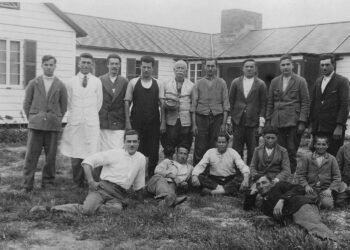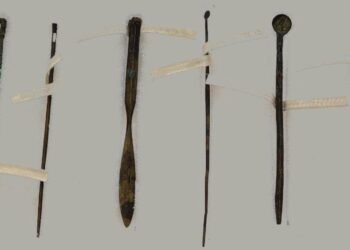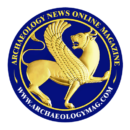Oracle bones are ancient artifacts that hold significant historical and cultural importance in Chinese civilization. They are primarily inscribed pieces of turtle shells or animal bones used for divination practices during the late Shang Dynasty (c. 16th to 11th century BCE) and early Zhou Dynasty (c. 11th to 3rd century BCE).
The inscriptions on oracle bones represent some of the earliest known examples of systematic Chinese writing. The script used is called “oracle bone script” or “bone script,” which is an ancient form of Chinese characters still in use today.

Divination
The divination process using oracle bones involved seeking guidance or insight from ancestral spirits or deities. The diviners, known as “bone script diviners,” would carve questions onto the bones, and after the inscriptions were made, heat would be applied to the bone, causing it to crack.
The resulting pattern of cracks was interpreted by the diviners to provide answers or predictions about various matters, such as the outcome of battles, the weather, harvests, or the ruling dynasty’s fate.

Discovery
Oracle bones were discovered in the late 19th century by farmers in the Henan province of China. These farmers, who were looking for medicinal remedies, came across fragments of ancient bones and shells that had mysterious inscriptions on them. Initially, these bones were believed to be dragon bones or fossils, and the inscriptions were considered to be mere decorative patterns.
In 1899, a Chinese scholar named Wang Yirong recognized the historical significance of these inscriptions and identified them as ancient Chinese writing. Wang Yirong’s findings sparked interest among other scholars, leading to further investigations and excavations.
The systematic study of oracle bones began in the early 20th century, particularly during the 1920s and 1930s. Archaeologists and scholars, such as Li Ji and Guo Moruo, conducted extensive excavations at the Shang Dynasty capital of Anyang in Henan province. These excavations unearthed vast quantities of oracle bones.
The process of deciphering the oracle bone inscriptions was a significant challenge due to the complex and archaic script. Scholars initially had to identify and categorize the characters, decipher their meanings, and reconstruct the ancient language.
The work of renowned scholars, such as Wang Guowei, Luo Zhenyu, and Xia Nai, contributed significantly to the understanding of the oracle bone script and the interpretation of the inscriptions.
The discovery of oracle bones revolutionized the study of ancient Chinese history. These inscribed artifacts provided concrete evidence of the existence of the Shang Dynasty, which was previously known primarily from historical texts. The bone inscriptions offered firsthand accounts of the Shang rulers, their rituals, political affairs, military activities, and everyday life.
The significance of oracle bones extends beyond their historical value. They provide valuable insights into ancient religious practices, beliefs, and divination techniques of the time. The inscriptions reflect the strong connection between the ruling elite and the spiritual world, as well as the belief in ancestral spirits and the divine authority of the rulers.

Important sites
Oracle bones have been primarily discovered in the archaeological site of Yinxu (also known as the Ruins of Yin or the Yin Ruins) in modern-day Anyang, Henan province, China. Yinxu was the capital of the Shang Dynasty, which existed from approximately the 16th century to the 11th century BCE. The site of Yinxu is considered one of the most important archaeological sites related to the Shang Dynasty.
In addition to Yinxu, oracle bones have also been found in other archaeological sites in China, although to a lesser extent. These sites include areas in Henan province, such as Xiaotun and Xiaoshuangqiao, as well as locations in other provinces, such as Shaanxi, Hubei, and Sichuan.

































